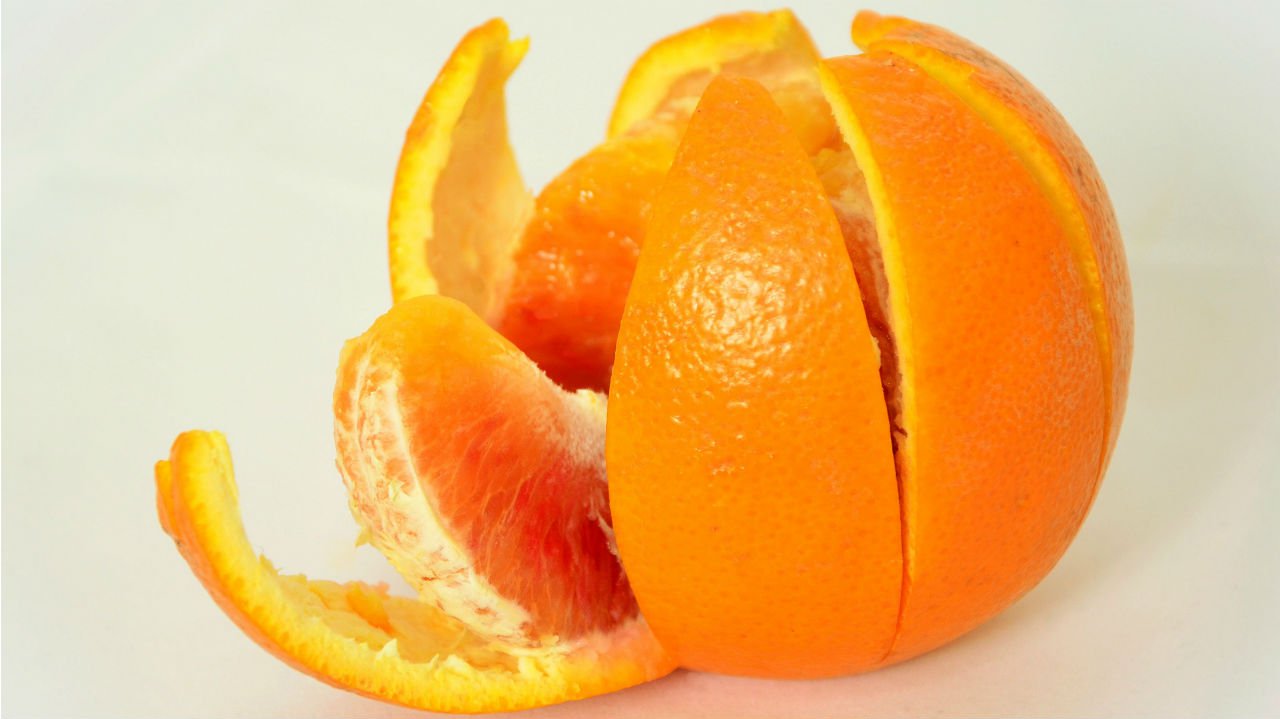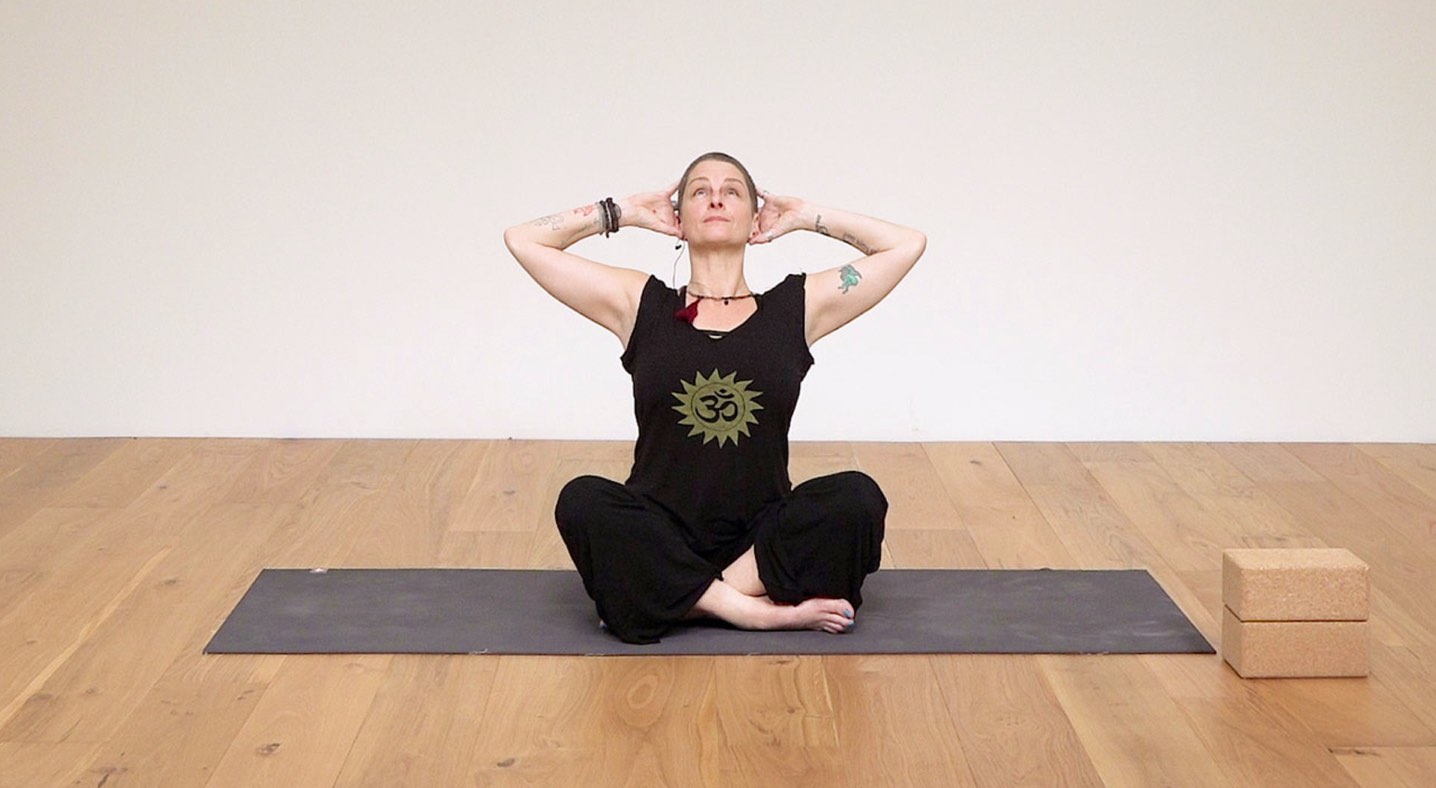Yummy and slow, winding and unwinding, reaching and stretching…sounds like the perfect yoga practice, yes? In addition to deep core work and lots of balancing postures, these words describe how I have been practicing and teaching the last few years. I also need to add that there is much umming, oohing and deep sighing as well. It just feels SO GOOD to roll around, stretch and free the fascia!
Free your fascia flow with Jennilee
Join Jennilee in this sweet and low slow flow that supports the freeing of the fascia (the extra-cellular matrix that holds us all together). This class is more on the “delicious” side – lots of stretching, winding, weaving and spiralling, as well as strengthening.
What is fascia?
Fascia is a connective tissue that unifies; fascia is the ultimate yogic connective tissue! Whereas at one time fascia was referred to as the “stuffing” – the packaging between the “important” stuff of organs, muscles and bones to be discarded in surgeries, autopsies and cadaver labs as uninteresting and unnecessary – it is now a science of great interest, especially for embodied movers, movement therapists and hands-on bodyworkers.
Fascia is a gelatinous matrix of interconnective tissue that wraps and glues everything in the human body together. It is under the surface of our skin (superficial fascia), wraps and supports our organs (visceral fascia) and encases our muscle fibers, muscle fascicles and the entire muscles themselves (deep fascia). It is highly innervated with sensory receptors that inform the brain of experiences like pain (nociceptors), movement of body in space and time (proprioceptors), temperature changes (thermoreceptors) and pressure/vibrational changes (mechanoreceptors). Once informed, fascia can then respond by contracting, relaxing, or by adding to, reducing or changing its composition (fascia remodeling) accordingly.
Fascia connects bones to bones, muscles to bones, and holds our internal organs together (and up!) An old module of teaching anatomy was to illustrate the notion that without our muscles, tendons and ligaments, we would just be a pile of bones. Now with the increased knowledge and awareness of fascia, we know that it;s more accurate to say that without fascia holding everything together we would just be a pile of muscles, tendons, ligaments and bones! What fascia science is now illuminating is that bone becomes ligaments that become other bones, and that muscles become tendons that become bones. They are all parts (different consistencies) of the ever-continuing stratum of fascia.
What fascia science is now illuminating is that bone becomes ligaments that become other bones, and that muscles become tendons that become bones. They are all parts (different consistencies) of the ever-continuing stratum of fascia.

If you peel an orange you will see a white coating under the peel and around the sub-sections of the orange. This white coating continues as a film that surrounds everything in the orange…all the way down to the individual pulps of the orange. This is like the fascia in our body: from superficial under the skin all the way to the deep fascia that encases each muscle.
How to ‘hydrate’ your fascia
All layers of connective tissue are made up of a ratio of collagen, elastin and a ground substance. Collagen fibers are long structural proteins that give connective tissue its tensile strength. Elastin fibers are bundles of proteins that give connective tissue its ability to be flexible (contractibility). Bones have more collagen than cartilage, tendons have more elastin than ligaments. Fascia has more ground substance that any of the four.
Ground substance is a viscous, gluelike composition that supports and offers nutrition to the connective tissue. In fascia, ground substance is made mostly of water (60-70%) due to macromolecules (proteoglycans) that bind water and glycoproteins (glycosaminoglycans or GAGS) together. GAGS are what draws water into the tissues and keeps it there! Hyaluronic Acid (HA) is a commonly known GAG and highly responsible for gliding actions in the body.
In order to “hydrate” your fascia it is important that binding sites for water are not impinged or obstructed. Habitual patterns set up in the body can adversely affect this freedom of access. To ensure this freedom we must move the body in the multidimensional ways. Fascia is designed (top to bottom (superiorly to inferiorly), front to back (anteriorly to posteriorly), left to right, diagonally and even spiral-like). And, in addition to hydrating, multidimensional movement helps the ground substance in its other job descriptions: feeding (bringing in nutrients) and cleaning (removing of debris).
On the yoga mat, we create shapes and postures that encourage the body to move in a myriad of ways. Referred to as “combination moves” yoga asanas require the body to be placed (joint and muscle actions) in a multitude of directions at one time. In one pose – Virabhadrasana 2 for instance – you can easily find yourself in all three planes of movement: sagittal, coronal and transverse. Also, the dynamic and rhythmic nature of Vinyasa flow yoga is a hydrating benefit to fascia due to the up/down and forward/back nature of Sun Salutations. Adding shaking or bouncing to the already present multidirectional qualities of our asanas will greatly increase our capabilities to hydrate our fascia – especially the beneficial shock-absorbing nature of healthy and hydrated fascia.
The effects of different kinds of yoga on fascia
“Every movement starts as an experimentation. Repeat it for a little while and it becomes a gesture. Repeat that gesture for a while and it becomes a habit. Repeat the habit for a while and the habit will require a posture of your body. A set of your body” ~ Tom Myers
Habitual patterns tend to leave certain muscles in the body tight, locked-short and other muscles in the body tight, locked-long. Studies of fascia have shown that our individual skeletal muscles (bone movers) are actually fragmented parts of a complete whole: separate pockets in large/ long continuous sheaths of fascia (fascia meridians). What affects one muscle in a particular meridian (front superficial, back superficial, front functional, back functional, lateral, deep frontal, etc) can affect all muscles in that meridian and in other meridians as well. Just as when something catches and pulls a spider web or snags an area in a pair of nylon tights, everything gets drawn in that direction of that snag or pull. There will be a bound area (in fascia this is collagen) and a larger/longer taut/tight area being pulled towards that bound area (collagen being pulled taut from its natural strong, long, springy, spiral shape).
When we experience this collagen bound “pull” or a “tug” in a direction – not necessarily tight and tense but more of a subtle and consistent experience of drag – we need longer-held Hatha yoga postures to support the collagen to release. Collagen release takes time and patience. Collagen cannot be broken up; it has the tensile strength of steel and, like steel, it needs to be melted. Whereas Yang styles of yoga are great for hydrating and toning your fascia, Yin styles of yoga aid in that slow, deliberate release of bound adhesions, ultimately resulting in more freedom and less restriction.

